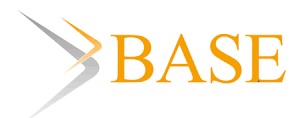Chula Formula is recommended in Estimating the Length of Tracheal Tube Insertion in Patients Receiving Mechanical Ventilation in Intensive Care Units in the Absence of Chest X-Ray
Abstract
Background: Chest X-Ray (CXR) is one of the most effective ways of confirming the length of the tracheal tube (TT) insertion. However, some intensive care unit in developing countries has no sufficient facilities. This study aims to evaluate the accuracy of TT length insertion using the Chula formula and Colombian formula in patients receiving mechanical ventilation in intensive care units.
Methods: This study is a comparative observational study of 50 adults in the Intensive care unit, divided into two groups. Group A used the Chula formula for TT length insertion (n= 25) and Group B used the Colombian formula (n= 25). The TT length insertion accuracy was evaluated using radiological parameters. Statistical analysis used: Data were analyzed statistically using the T-test and Chi-square test.
Result: The Chula formula is significantly more precise than the Colombian formula in estimating the length of TT insertion based on the radiographic parameters of the TT length insertion right midway between the medial tip of the clavicle and TT located in the T3 or T4 vertebrae (p <0.05), but not significantly different in the two other parameters.
Conclusion: Both the Chula formula and the Colombian formula can estimate the length of TT insertion in adult patients. However, the Chula formula is more recommended in the length of TT insertion and benefit in the ICU with insufficient CXR.
Keywords
Full Text:
PDFReferences
Slutsky AS. History of Mechanical Ventilation. From Vesalius to Ventilator-induced Lung Injury. Am J Respir Crit Care Med. 2015;191(10):1106-1115. doi:10.1164/rccm.201503-0421PP
Jordan P, Ten Ham W, Fataar D. Endotracheal tube verification in adult mechanically ventilated patients. South African J Crit Care. 2015;31(1):20-23. doi:10.7196/SAJCC.199
Russotto V, Rahmani LS, Parotto M, Bellani G, Laffey JG. Tracheal intubation in the critically ill patient. Eur J Anaesthesiol. 2022;39(5):463-472. doi:10.1097/EJA.0000000000001627
Carvajal C, Lopez J. Airway Monitoring. In: Airway Monitoring. Treasure Island (FL): StatPearls Publishing; 2020. Accessed September 16, 2020. https://www.ncbi.nlm.nih.gov/books/NBK534879/
Ashwin R Saboo RV. Review of Different Methods Used for Confirmation of Endotracheal Tube Placement in Newborns. J Neonatal Biol. 2014;03(04):2-5. doi:10.4172/2167-0897.1000154
Mukherjee S, Ray M, Pal R. Bedside prediction of airway length by measuring upper incisor manubrio-sternal joint length. J Anaesthesiol Clin Pharmacol. 2014;30(2):188-194. doi:10.4103/0970-9185.130011
Lal A, Pena ED, Sarcilla DJ, Perez PP, Wong JC, Khan FA. Ideal Length of Oral Endotracheal Tube for Critically Ill Intubated Patients in an Asian Population: Comparison to Current Western Standards. Cureus. 2018;10(11). doi:10.7759/cureus.3590
Gómez JC, Melo LP, Orozco Y, Chicangana GA, Osorio DC. Estimation of the optimum length of endotracheal tube insertion in adults. Rev Colomb Anestesiol. 2016;44(3):230-235. doi:10.1016/j.rca.2016.05.001
Varshney M, Sharma K, Kumar R, Varshney PG. Appropriate depth of placement of oral endotracheal tube and its possible determinants in Indian adult patients. Indian J Anaesth. 2011;55(5):488-493. doi:10.4103/0019-5049.89880
Brunel W, Coleman DL, Schwartz DE, Peper E, Cohen NH. Assessment of routine chest roentgenograms and the physical examination to confirm endotracheal tube position. Chest. 1989;96(5):1043-1045. doi:10.1378/chest.96.5.1043
Ledrick D, Plewa M, Casey K, Taylor J, Buderer N. Evaluation of Manual Cuff Palpation to Confirm Proper Endotracheal Tube Depth. Prehosp Disaster Med. 2008;23(3):270-274. doi:10.1017/s1049023x00064992
Techanivate A, Kumwilaisak K, Samranrean S. Estimation of the proper length of orotracheal intubation by Chula formula. J Med Assoc Thai. 2005;88(12):1838-1846.
Cherng CH, Wong CS, Hsu CH, Ho ST. Airway length in adults: Estimation of the optimal endotracheal tube length for orotracheal intubation. J Clin Anesth. 2002;14(4):271-274. doi:10.1016/S0952-8180(02)00355-0
Pang G, Edwards MJ, Greenland KB. Vocal cords-carina distance in anaesthetised Caucasian adults and its clinical implications for tracheal intubation. Anaesth Intensive Care. 2010;38(6):1029-1033. doi:10.1177/0310057x1003800611
Herway ST, Benumof JL. The tracheal accordion and the position of the endotracheal tube. Anaesth Intensive Care. 2017;45(2):177-188. doi:10.1177/0310057x1704500207
DOI: http://dx.doi.org/10.21776/ub.jap.2023.004.02.01
Refbacks
- There are currently no refbacks.

This work is licensed under a Creative Commons Attribution 4.0 International License.









.png)

